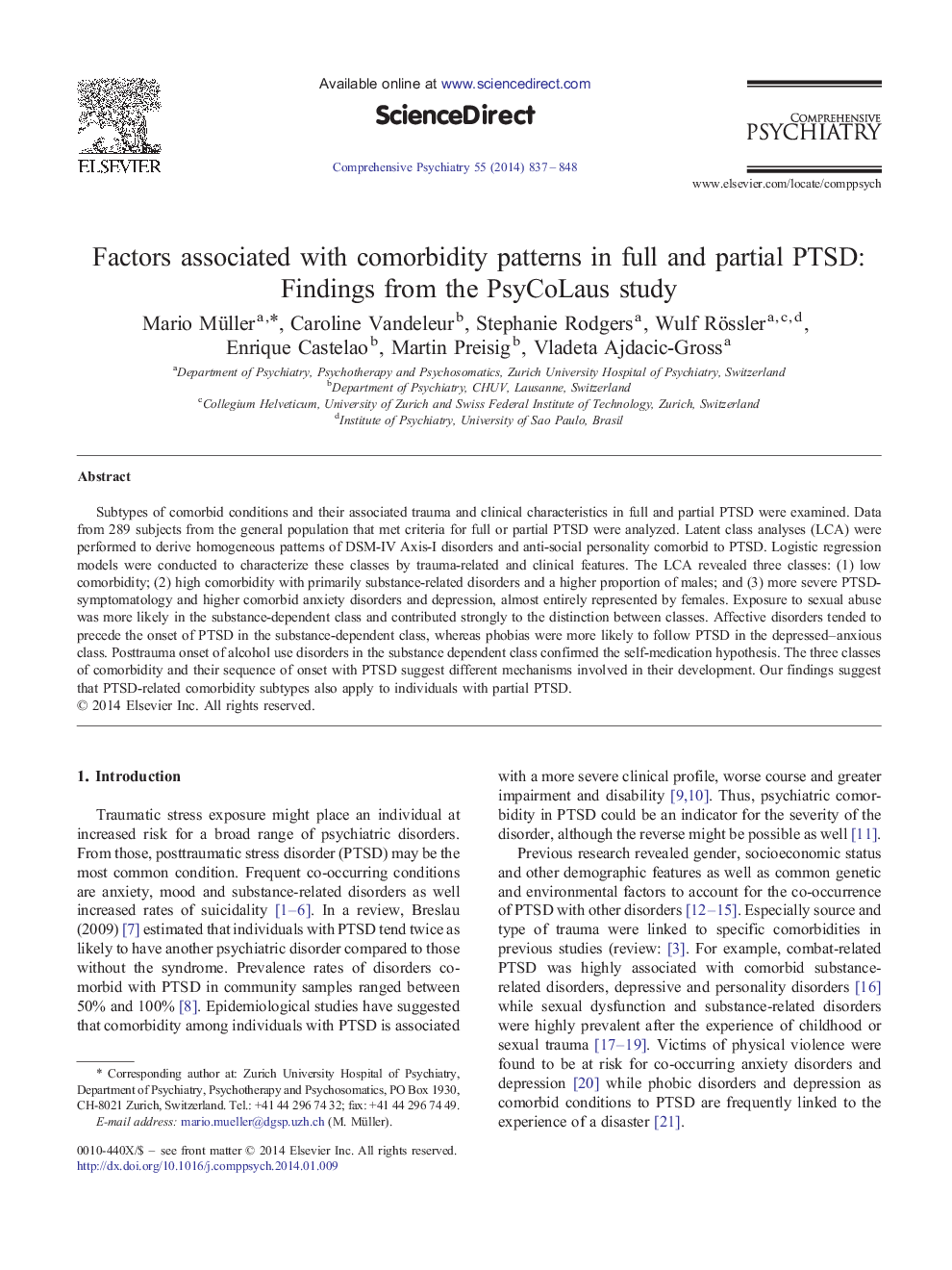| Article ID | Journal | Published Year | Pages | File Type |
|---|---|---|---|---|
| 317423 | Comprehensive Psychiatry | 2014 | 12 Pages |
Subtypes of comorbid conditions and their associated trauma and clinical characteristics in full and partial PTSD were examined. Data from 289 subjects from the general population that met criteria for full or partial PTSD were analyzed. Latent class analyses (LCA) were performed to derive homogeneous patterns of DSM-IV Axis-I disorders and anti-social personality comorbid to PTSD. Logistic regression models were conducted to characterize these classes by trauma-related and clinical features. The LCA revealed three classes: (1) low comorbidity; (2) high comorbidity with primarily substance-related disorders and a higher proportion of males; and (3) more severe PTSD-symptomatology and higher comorbid anxiety disorders and depression, almost entirely represented by females. Exposure to sexual abuse was more likely in the substance-dependent class and contributed strongly to the distinction between classes. Affective disorders tended to precede the onset of PTSD in the substance-dependent class, whereas phobias were more likely to follow PTSD in the depressed–anxious class. Posttrauma onset of alcohol use disorders in the substance dependent class confirmed the self-medication hypothesis. The three classes of comorbidity and their sequence of onset with PTSD suggest different mechanisms involved in their development. Our findings suggest that PTSD-related comorbidity subtypes also apply to individuals with partial PTSD.
